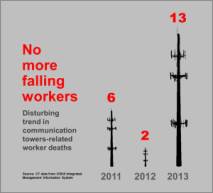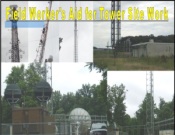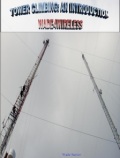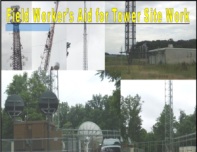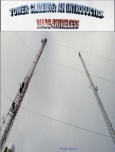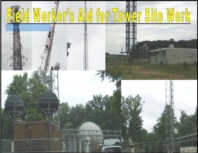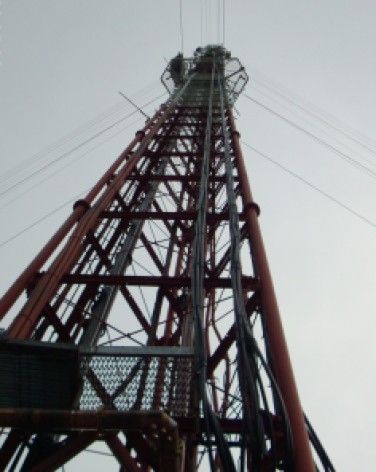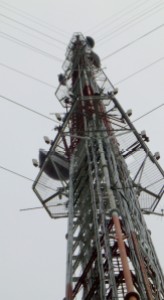Podcast: Play in new window | Download | Embed
Subscribe: Apple Podcasts | RSS
Subscribe! Write a review! Show me you listen!
Hello all,
Small Cell deployments will present you with many issues. Make sure that you have the right partnerships in place. What partnerships do you think you need? Well, I made a quick list to help you deploy. Remember that this is high level but I wanted you to know what to think about before bidding on this work.
- Site Acquisition partnerships. Remember that the site acquisition teams will be critical in this industry because they are going to find hundreds to thousands of poles and buildings to hang these things on. You should be clear who you are working with and make sure you know all the details of where you are mounting. If you are mounting on poles it would be great to be consistent with the height and cable runs. This will save you so much time in the long run. More on this in the future.
- Original Equipment Manufacturers will be the equipment makers and if you don’t know how to install, ground, and power the unit, things will get ugly. If they have a certification program make sure that you take it. If they have installation documentation make sure you get it and look at prior to the installation. If the installation is done wrong it has serious implications causing you to go back out to repair or the carrier to replace or the warranty to be void. You should know what is expected way before you drive to the site.
- Deployment vendors. I know you may think this is crazy because you are a deployment company, but chances are for you to be competitive you will work in a region. So you may have to work with a vendor that interfaces with the customer on a nationwide deployment. You will need to be clear with what territory you cover. Make sure they are clear on what you can install and what you can maintain. Maintenance will be something that you can make recurring revenue if you sign up for it.
- End customer. By end customer I mean the actual carrier that you are installing for. Your customer may be a large vendor or a site acquisition firm or maybe the carrier itself. Whoever it is make sure you know all of their install requirements. Remember that each company has different rules for installation and testing and sign. It is nice to get paid for what you have done and if you didn’t follow a proper process they could withhold payment or make you go out to each site again to do something that would have taken 5 minutes the first time. It’s your costs that get hit!
- Backhaul companies. This is something that you may not have direct contact with but you should know what they want you to install and how to install it. Know what fiber is expected and where they terminate and what connectors they may want on their end. If you don’t think it matters, you may wind up making a second trip when you need to get more fiber connectors. Also, just because it’s a cable company doesn’t mean that it’s going to be DOCSIS. You really need to make sure you know the backhaul provider and type of backhaul. Remember that it could even be wireless backhaul. You could be in one city connecting up 5 different backhaul companies and 5 different types. Make sure you look it over before you go out to do the installation.
- Distributors and suppliers. Make sure you are able to get more connectors if you need them. It’s not likely that Home Depot or Lowes will have fiber connectors that you need, (Graybar maybe if one is close but don’t count on it). If you need RG6 or RJ45 connectors, great. Make sure your distributor of choice will overnight something to you even if you are in a hotel. Make sure you know what to order so you don’t wind up waiting another day when you get the wrong part. You probably have been there and it really sucks.
- Lift rental companies. If you don’t have your own bucket trucks or JLG lifts, then you may want to know who the local company is to rent. Look at rates and locations and support. If you can pick it up locally maybe you save some money. Also, if you rent a bigger truck, do you need to have a CDL to drive it? You will look pretty stupid showing up to get it and they ask for your CDL and you don’t have one. I had to get one to drive our trucks and buckets where I worked. Also, know the difference between the CDLs, I had the basic without the air brake certification. By the way, if you’re reading this and asking what a CDL is, maybe you should start looking into other work. You may not need it but you should know what it is. A ladder will only be one of your tools and a bucket truck may be another.
- Project managers. I am not sure what project manager you will be working with, it may be a PM company hired to manage the deployment, it may be the vendor who hired you, the site acquisition company, the OEM, or the end customer. Make sure you have a good relationship with the PM because they will be directing you and managing your work. They may control your signoff to get paid. They may be the ones who have all of the paperwork about the sites from the surveys. Remember that the PM wants you to complete all the installations quickly and without errors. So you both are partners with an interest in success.
You can’t do it alone! You need more than you think, just ask Navin from the movie “The Jerk”, (Steve Martin) who didn’t think he needed anything;
Don’t forget to take the poll for jobs!
Remember that the Hubble Foundation needs your support. Show you care for the families of the fallen and the fellow climbers in need. They still have tickets to the car giveaway! Support Hubble, honor the fallen, and maybe win a Mustang!
I am working on 2 new projects, a new book that outlines my different jobs in the industry and a library of reference material that you can access quickly to take to the site. I want to see you make the site safer with quick reference material. If you have any idea of what you need out there let me know. Show me you care, Facebook, wade4wireless@gmail.com or leave a comment or leave a message at 510-516-4283
My Books from Amazon, Shameless plugs:
My books on Sellfy, PDF, PayPal:
My books on GumRoad, PDF, Credit Card:




